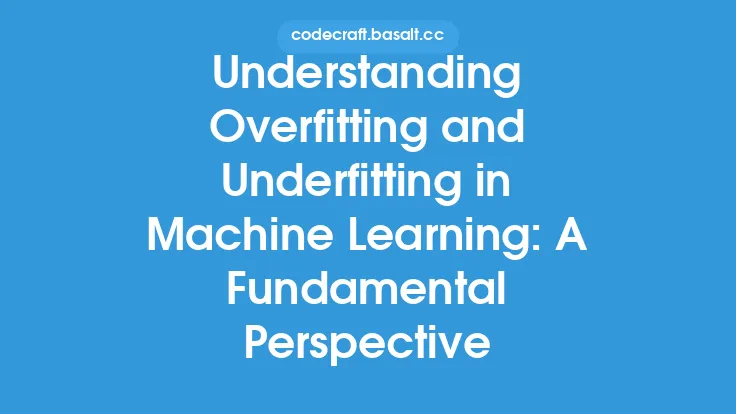In the realm of machine learning, the perpetual quest for optimal model performance is a delicate balancing act. On one hand, models that are too simple may fail to capture the underlying patterns in the data, resulting in poor predictive performance – a phenomenon known as underfitting. On the other hand, models that are too complex may become overly specialized to the training data, failing to generalize well to new, unseen data – a phenomenon known as overfitting. Striking a balance between these two extremes is crucial for achieving reliable and accurate predictions in real-world scenarios.
Introduction to Overfitting and Underfitting
Overfitting occurs when a model is too closely fit to the training data, capturing noise and random fluctuations rather than the underlying patterns. This results in excellent performance on the training data but poor performance on new, unseen data. Underfitting, on the other hand, occurs when a model is too simple to capture the underlying patterns in the data, resulting in poor performance on both the training and testing data. The key to avoiding both overfitting and underfitting is to find a model that is complex enough to capture the underlying patterns in the data but simple enough to avoid fitting the noise.
The Role of Model Capacity
Model capacity refers to the ability of a model to fit complex patterns in the data. Models with high capacity, such as neural networks and decision trees, are more prone to overfitting, while models with low capacity, such as linear regression, are more prone to underfitting. The choice of model capacity depends on the complexity of the data and the amount of noise present. In general, models with high capacity are preferred when the data is complex and noisy, while models with low capacity are preferred when the data is simple and clean.
Regularization Techniques
Regularization techniques are a class of methods that aim to reduce overfitting by adding a penalty term to the loss function. The penalty term discourages the model from fitting the noise in the data, resulting in a simpler model that generalizes better. Common regularization techniques include L1 and L2 regularization, dropout, and early stopping. L1 regularization, also known as Lasso regression, adds a penalty term to the loss function that is proportional to the absolute value of the model coefficients. L2 regularization, also known as Ridge regression, adds a penalty term to the loss function that is proportional to the square of the model coefficients. Dropout is a technique that randomly sets a fraction of the model coefficients to zero during training, preventing the model from becoming too specialized to the training data. Early stopping is a technique that stops training when the model's performance on the validation set starts to degrade, preventing overfitting.
Hyperparameter Tuning
Hyperparameter tuning is the process of selecting the optimal hyperparameters for a model. Hyperparameters are parameters that are set before training the model, such as the learning rate, batch size, and number of hidden layers. The choice of hyperparameters has a significant impact on the model's performance, and finding the optimal hyperparameters can be a challenging task. Common hyperparameter tuning techniques include grid search, random search, and Bayesian optimization. Grid search involves searching through a predefined grid of hyperparameters, while random search involves searching through a random sample of hyperparameters. Bayesian optimization involves using a probabilistic model to search for the optimal hyperparameters.
Ensemble Methods
Ensemble methods involve combining the predictions of multiple models to improve overall performance. Ensemble methods can be used to reduce overfitting by combining the predictions of multiple models that are trained on different subsets of the data. Common ensemble methods include bagging, boosting, and stacking. Bagging involves training multiple models on different subsets of the data and combining their predictions. Boosting involves training multiple models on the same data, with each subsequent model focusing on the errors made by the previous model. Stacking involves training multiple models on the same data and combining their predictions using a meta-model.
Real-World Applications
Striking a balance between overfitting and underfitting is crucial in real-world applications, where models are often deployed in production environments. In image classification, for example, models that are too complex may overfit to the training data, resulting in poor performance on new, unseen images. In natural language processing, models that are too simple may underfit the data, resulting in poor performance on tasks such as sentiment analysis and language translation. In recommender systems, models that are too complex may overfit to the user's past behavior, resulting in poor performance on recommending new items.
Conclusion
Striking a balance between overfitting and underfitting is a delicate task that requires careful consideration of the model's capacity, regularization techniques, hyperparameter tuning, and ensemble methods. By understanding the trade-offs between these different techniques, practitioners can develop models that generalize well to new, unseen data and achieve reliable and accurate predictions in real-world scenarios. Whether it's image classification, natural language processing, or recommender systems, finding the right balance between overfitting and underfitting is crucial for achieving success in machine learning applications.





